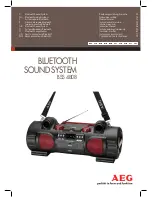
Manual-4
OPERATING INSTRUCTIONS
The DMS 22 has been design to operate in a similar
fashion to most mixer input strips. Anyone familiar with
mixers should have little difficulty mastering the DMS 22.
INPUT SECTION
When setting up the Input section, one should always take
as much gain as possible right at the Input. Therefore, the
highest level audio from the MIC INPUT should just about
light the OL LED. It is a good idea to experiment with
different settings to make sure the input stage is set up
properly. Failure to do so will sacrifice noise performance
down the line. Pristine 48 volt Phantom Power is available at
a push of a button with no degradation of the audio signal
quality. This is sufficient to cover most microphones on the
market and is specifically designed for fussy high end
microphones requiring full 48 volts of Phantom Power.
Verification is recommended that your mic can
handle
48
volts of Phantom Power, if used. If your application requires
an inversion of the signal polarity the DMS 22 accommodates
that with a POLARITY INVERT switch. LOW
FREQUENCY FILTERS
(located on the rear)
are also
provided with three different settings to remove potential low
frequency bumps and such.
EQUALIZER
The EQ section of the DMS 22 is particularly interesting.
The high frequency and low frequency shelving controls
feature Rane’s patented Accelerated Slope (TM) circuitry.
This helps eliminate the unwanted influence over out-of band
signals so prevalent in standard shelving controls. What this
means is that the rolloff rates are much steeper than those
usually encountered. Additionally both high frequency and
low frequency shelving controls feature a Turnover switch
allowing the user to select the Frequency range most
appropriate to their application.
The midrange section of the DMS 22s equalizer is
parametric. The bandwidth may be set to one of three
settings: 1/3-octave, 1-octave, or 2-octaves. The center
frequency may be adjusted over a range of 95 Hz to 4 kHz.
All three bands cover an amplitude range of -15 dB to +12
dB. All of the Level controls feature a grounded center detent
thus ensuring that a “zero” setting gives you just what you
wanted: a guaranteed zero (flat) response.
The EQ IN/OUT switch provides a “hard-wire” bypass
around the equalizer section. Even though the center detents
of the EQ Level controls provide a guaranteed zero, some
engineers use the bypass to compare the EQ settings.
INDIVIDUAL CHANNEL OUTPUTS
If mixing of the two Channels is not required or desired
and you simply want to have two separate mic-to-line level
preamps, use the individual CHANNEL OUTPUTS. They are
fully balanced ¼" TRS connectors. The PAN and STEREO
OUTPUT LEVEL controls have no affect on these individual
CHANNEL OUTPUTS.
STEREO OUTPUTS
These STEREO OUTPUTS allow you to mix/split one or
two Inputs to two Output Channels. The PAN control directs
the amount of signal available to the STEREO LEVEL
CONTROL, which in turn determines the overall amount of
signal available at the STEREO OUTPUTS. They are fully
balanced XLR connectors.
©Rane Corporation 10802 47th Ave. W., Mukilteo WA 98275-5098 TEL (425)355-6000 FAX (425)347-7757 WEB http://www.rane.com
103228






















